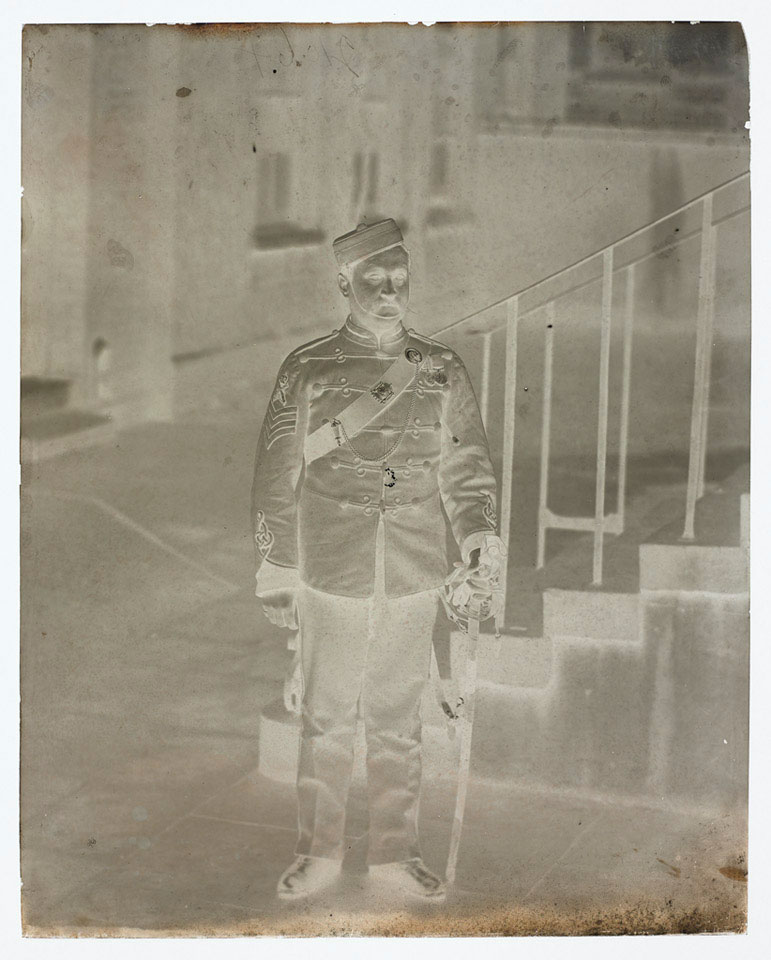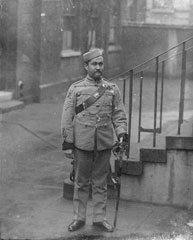
Online Collection
« Prev - 1 of 1 results - Next »
Sergeant Instructor, 13th Middlesex (Queen's) Volunteer Rifle Corps (Westminster), 1895 (c)
Glass negative, W Gregory and Company, 51 Strand, London, 1895 (c).
This image comes from a collection of glass plate negatives associated with William Gregory and Company. The negatives depict the British Army, including some members of the colonial forces, 'at home' in Britain during the 1890s.
As well as being intimate portraits of soldiers from this era, the images provide detailed illustrations of uniforms worn during the high point of military tailoring.
This corps was originally raised in 1860 as the 22nd Middlesex Rifle Volunteers, but was renumbered in 1880. The unit was one of the largest rifle volunteer units in London. In 1908 it became a battalion of the newly reorganised London Regiment, as part of the Territorial Force that was formed in that year.
The sergeant is likely a musketry instructor (four chevrons, crossed muskets and crown) and wears the distinctive grey uniform of the Regiment, one of a number to do so and which became known as the 'Grey Brigade'. The hussar-style tunic has red facings and distinctive cords loops across the chest and on the cuffs. He wears an undress pillbox cap and holds a swagger stick under his arm.
His pouch belt badge shows St George on horseback, surmounted by a crown upon a portcullis carrying the scroll 'The Queen's'. He wears the Ashantee Medal (1873-4) and the Long Service and Good Conduct medal. He holds his sword, which is attached to his sword belt, and a pair of gloves.
One of a collection of 280 glass negatives, associated with Gregory and Company, London, and F G O 1893 (c).
NAM Accession Number
NAM. 1978-02-37-122
Copyright/Ownership
National Army Museum, Out of Copyright
Location
National Army Museum, Study collection
Object URL
https://collection.nam.ac.uk/detail.php?acc=1978-02-37-122


